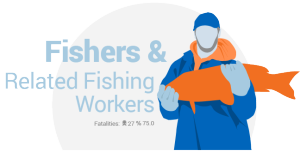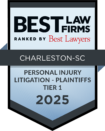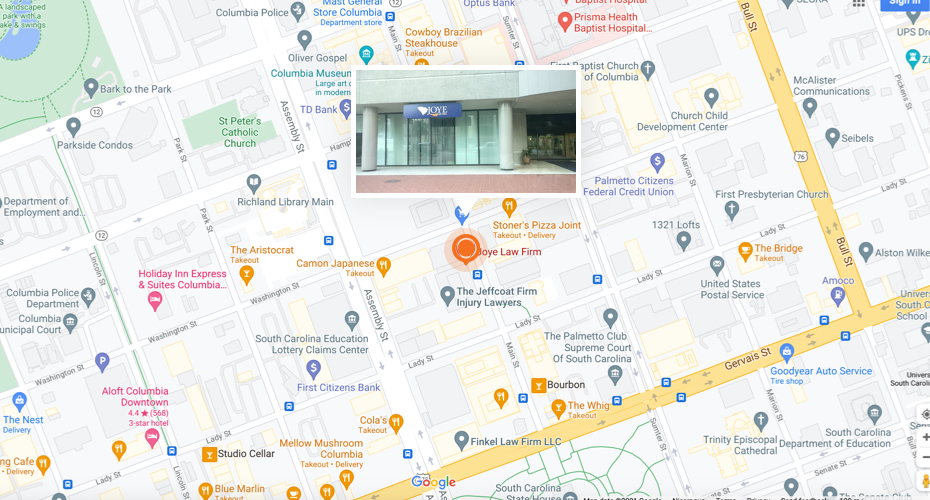Most people go to work every morning, taking for granted that they will come home safely at the end of the day. However, some jobs carry higher risks than others, making it less likely that workers will come home at all. Agriculture, logging, mining, and are some of the most dangerous industries in the U.S.
In 2023 alone, 5,283 Americans died in on-the-job accidents – a 3.7 percent decrease from 2022 – according to the National Census of Fatal Occupational Injuries report from the Bureau of Labor Statistics (BLS). The rate of fatal workplace injuries stood at 3.5 per 100,000 full-time equivalent (FTE) workers, though some industries far exceeded this rate.
These are the 10 most dangerous jobs, according to preliminary BLS data:
- Farmers, Ranchers, and Other Agricultural Managers: Workers in this industry produce livestock, crops, and dairy products.
Fatalities: 146
Fatality rate: 20.0
Risks: Vehicle and machinery accidents, hazardous environment. - Mining Machine Operators: In a continuous operation, these workers control mining machines that tear metal, coal, rock, sand, or stone from the mine face and load it into shuttle cars or conveyors.
Fatalities: 8
Fatality rate: 20.1
Risks: Accidents involving mining equipment and dangerous underground conditions. - Structural Iron and Steel Workers: These workers are responsible for erecting and installing steel frameworks for buildings, bridges, and other structures, working with large, heavy metal beams, columns, and girders.
Fatalities: 14
Fatality rate: 21.3
Risks: Heights, heavy equipment, falling objects. - Refuse and Recyclable Material Collectors: These workers collect recyclable materials and refuse and transfer it from containers into trucks.
Fatalities: 22
Fatality rate: 22.6
Risks: Transportation incidents, contact with heavy equipment, and environmental pollutants. - Driver/Sales Workers and Truck Drivers: These workers are drivers of trucks and other vehicles with an established territory or route to sell or deliver goods, such as food products or a commercial laundry service. The workers might also stock merchandise, collect payments, or take orders along the route.
Fatalities: 1115
Fatality rate: 30.4
Risks: Road accidents, heavy lifting, long hours.  Aircraft Pilots and Flight Engineers: These workers pilot and navigate the flight of a variety of aircraft that carry passengers and cargo, usually on scheduled routes.
Aircraft Pilots and Flight Engineers: These workers pilot and navigate the flight of a variety of aircraft that carry passengers and cargo, usually on scheduled routes.
Fatalities: 72
Fatality rate: 35.9
Risks: Accidents in flight, high stress, extreme schedules.- Construction Laborers: These workers perform physical labor at construction sites, which can include using power and hand tools, digging
 trenches, and preparing the worksite. They also erect scaffolding, set braces to support the sides of excavations and clean up debris and rubble.
trenches, and preparing the worksite. They also erect scaffolding, set braces to support the sides of excavations and clean up debris and rubble.
Fatalities: 20
Fatality rate: 38.5
Risks: Physical labor, heights, power tools, hazardous work sites. - Fishers and Related Fishing Workers: Workers in this industry catch fish and other marine life for food, animal feed, and bait.

Fatalities: 16
Fatality rate: 50.9
Risks: Severe weather, heavy equipment, remote locations. - Roofers: Workers in this industry repair and install building roofs and use a variety of materials, including metal, asphalt, and shingles.
Fatalities: 105
Fatality rate: 57.5
Risks: Falls from heights, extreme heat, handling heavy materials. - Logging Workers: These workers cut down trees in thousands of acres of forest. This timber provides material for many products and goods.
Fatalities: 54
Fatality rate: 100.7
Risks: Falling trees, heavy machinery, remote work locations.
These professions are categorized as the deadliest jobs in the U.S. due to their high rates of injury and fatality. Every occupation involves some level of risk, but jobs that require physical labor, hazardous equipment, or exposure to severe environments increase these dangers significantly.
What Makes a Job Likely to Cause Injury or Death?
Workplace fatalities stem from various causes, many of which occur in routine situations. The BLS identifies the “major events” contributing to the 5,486 fatal workplace injuries in 2022 as:
- Transportation incidents (car and truck accidents) – often involving vehicles like trucks or heavy machinery
- Falls, slips, and trips – especially prevalent in construction and logging
- Violence and other injuries by people or animals – particularly in industries with exposure to the public
- Contact with objects and equipment – including caught in running equipment or “machinery deaths”
- Exposure to harmful substances or environments – including toxic chemicals or extreme temperatures
How a Personal Injury and Workers’ Compensation Lawyer Can Help After a Fatal Workplace Accident
If you’ve lost a loved one to a workplace accident, South Carolina’s workers’ compensation laws may entitle you to benefits that can ease the burden of funeral costs, medical expenses, and lost income.
In some cases, if a non-employer entity —such as an equipment manufacturer or contractor—contributed to the accident, your family may be able to file a personal injury or wrongful death lawsuit against this third party. Unlike workers’ compensation, which provides limited benefits, a third-party claim may allow for broader compensation, including pain and suffering and additional financial support for the family.
At Joye Law Firm, we understand that workplace accidents can turn a family’s world upside down. Having both workers’ compensation and personal injury attorneys under one roof allows us to address every possible avenue of recovery for you and your family. When an on-the-job accident occurs, you need a team equipped to explore all facets of your case, ensuring no detail is overlooked. Whether securing workers’ comp benefits or pursuing a third-party claim for additional compensation, our attorneys collaborate to provide comprehensive legal support, leaving no stone unturned in the fight for justice.
With deep experience in both workers’ compensation and personal injury law, our team at Joye Law Firm is uniquely positioned to help families navigate these complex cases and maximize their benefits. Let us guide you through this difficult time and pursue every option to achieve the full and fair recovery your family deserves. Give us a call at (888)-324-3100 or contact us online to get started with a free consultation.







































